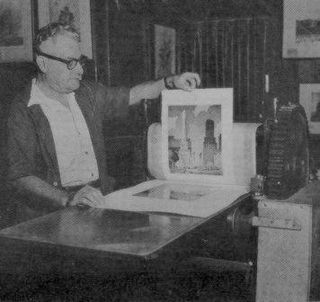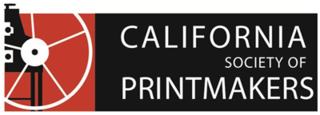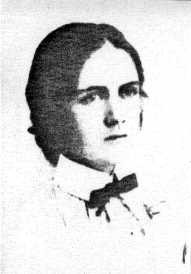
Frank Weston Benson, frequently referred to as Frank W. Benson, was an American artist from Salem, Massachusetts known for his Realistic portraits, American Impressionist paintings, watercolors and etchings. He began his career painting portraits of distinguished families and murals for the Library of Congress. Some of his best known paintings depict his daughters outdoors at Benson's summer home, Wooster Farm, on the island of North Haven, Maine. He also produced numerous oil, wash and watercolor paintings and etchings of wildfowl and landscapes.

The etching revival was the re-emergence and invigoration of etching as an original form of printmaking during the period approximately from 1850 to 1930. The main centres were France, Britain and the United States, but other countries, such as the Netherlands, also participated. A strong collector's market developed, with the most sought-after artists achieving very high prices. This came to an abrupt end after the 1929 Wall Street crash wrecked what had become a very strong market among collectors, at a time when the typical style of the movement, still based on 19th-century developments, was becoming outdated.

The New York Etching Club, formally New York Etchers Club, was one of the earliest professional organization in America devoted to the medium of etching. Its founders were inspired by the Etching revival that had blossomed in France and England in the middle of the 19th century. The purpose of the club was to create and promote etchings that did not merely reproduce existing paintings, but were original creations of art in their own right.

Mukul Chandra Dey was one of five children of Purnashashi Devi and Kula Chandra Dey. He was a student of Rabindranath Tagore's Santiniketan and is considered as a pioneer of drypoint-etching in India. The entire family of Mukul Dey had artistic talents, the brother Manishi Dey was a well-known painter, and his two sisters, Annapura and Rani Chanda, were accomplished in arts and crafts as well.

Leon Rene Pescheret, also known as Léon-René Pescheret was a British-born American designer, watercolorist, etcher, and illustrator.

The California Society of Printmakers (CSP) is the oldest continuously operating association of printmakers and friends of printmakers in the United States. CSP is a 501(c)(3) non-profit arts organization with an international membership of print artists and supporters of the art of fine printmaking. CSP promotes professional development and opportunity for printmakers, and educates artists and the public about printmaking. New members are admitted by portfolio review. Friends, Institutional and Business members are admitted by fee. CSP is based in the San Francisco Bay Area, California.
Norma Bassett Hall (1889–1957) was an American printmaker. She was a woodblock printmaker and often depicted landscapes and outdoor scenes.

Bror Julius Olsson Nordfeldt was an American artist who painted seascapes and depictions of New Mexico's indigenous culture.
Bertha Boynton Lum was an American artist known for helping popularize the Japanese and Chinese woodblock print outside of Asia.

Bertha Evelyn Jaques was an American etcher and cyanotype photographer. Jaques helped found the Chicago Society of Etchers, an organization that would become internationally significant for promoting etching as a popular printmaking technique. She is best known for her hand-colored botanical prints and scenes from her foreign and domestic travels.
The Society of Canadian Painter-Etchers and Engravers (CPE) was a non-profit organization of Canadian etchers and engravers.

Gabrielle de Veaux Clements was an American painter, print maker, and muralist. She studied art at the Philadelphia School of Design for Women, Pennsylvania Academy of the Fine Arts, and in Paris at Académie Julian. Clements also studied science at Cornell University and graduated with a Bachelor of Science degree. She created murals, painted portraits, and made etchings. Clements taught in Philadelphia and in Baltimore at Bryn Mawr School. Her works have been exhibited in the United States and at the Paris Salon. Clements works are in several public collections. Her life companion was fellow artist Ellen Day Hale.
Reynold Henry Weidenaar (1915-1985) was an artist from Grand Rapids, Michigan, recognized nationally as well as locally for his technical virtuosity as a draftsman and printmaker. He embraced the subject matter and realism of American Regionalist art, though his depictions of the American Scene reflect a uniquely personal, often satirical perspective. Weidenaar is especially known for his mezzotint prints, particularly those of architectural subjects, such as the construction of the Mackinac Bridge.
Alice Geneva "Gene" Kloss was an American artist known today primarily for her many prints of the Western landscape and ceremonies of the Pueblo people she drew entirely from memory.
May Gearhart was an American printmaker who was part of an early 20th century circle of Southern California printmakers strongly influenced by the Arts and Crafts movement and Japanese art.

Norah Hamilton was an artist and the director of the Children's Art program at Hull House where she lived for more than 20 years. She was a pioneer in art education for underprivileged children.
Beatrice Sophia Steinfeld Levy was an American printmaker and painter, draftsman, and instructor.
Kathrin Cawein (1895–1996) was an American printmaker known for her etchings. Her style was realist and her subjects were mainly landscapes and interiors. Early in her career, her work received praise from one critic for its "adroit handling of color and good drawing — a technique that seems to express personal engaging conceptions." Critics also considered her prints to be "striking" and having a "high level of workmanship."
Augusta Payne Briggs Rathbone was an American painter, etcher and printmaker. She studied at the University of California, Berkeley and in Paris. She depicted people and locations from San Francisco, the Sierra, New York City, the West Coast of Canada, the Canadian Rockies, and France. In 1938, she published a book of aquatints of French Riviera Villages with photographs by Juliet Thompson and text by Virginia Thompson. Her work appeared internationally in group and solo exhibitions, and continues to appear in retrospectives of American printmaking.
Frances Julia Farrand Dodge was an American artist and teacher.










